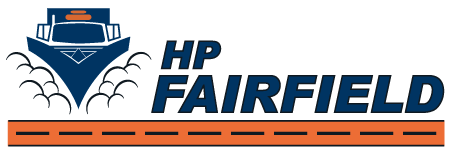What You Need to Know About Website Navigation

When looking at creating a truly usable, functional, and elegant website navigation system, you find that to start, you do not offer increasingly more options. Rather you narrow them! Many people believe that good service comes with more choices. In regards to navigation options, the fewer choices you initially offer, the better.
Essentially, the choices can be limited at first. If only they end up taking the end-user to where they need to go. To truly get the most out of your website, there are two steps that you need to consider. First, you need to choose the type of navigation menu that is required. Then second, you need to create it.
Before you begin, make sure that you understand what we mean when we say navigation menu. Essentially, this is a part of the interface that allows your end-users to find what they need on your website. Depending on what you offer, the navigation links take them to your products, services, information about your company, what you offer as educational aids, and more.
Do you understand the difference between a primary & secondary navigation model?
These words are thrown around quite frequently. Truly understanding what these words mean can be a little tricky. A primary model is also referred to as a traditional model. In this model, the user hovers the mouse over the categories, clicks to select, and browses. A secondary model, also called an alternate navigation model, tends to be more open-ended and intuitive.
There are five main types of navigation that you can choose from when determining the best one for your website. Though there are different combinations and alternatives. Each type of navigation system that you choose eventually comes back to these five options.
Starting with the least to most complicated, types of navigation systems include:
Menu Bar
A menu bar is an extremely simple method of getting your users to your content. This bar may be a horizontal or vertical bar across the website. It features the most frequently accessed categories or topics on your website. If your website is very simple and straightforward, this is a great choice.
Each section on the menu bar takes you to a new page. The problem appears with this navigation system when you have too many categories or selections which causes the page to become crowded. If you gravitate towards the menu bar, remember that your best bet for making it work is to keep your content relatively simple.
Break it down into just a few categories. Another issue occurs when users have smaller screens than the developers do when developing your website. This can cause your navigation system to stack on itself, creating a rather cramped look. This, in turn, can hide a lot of what you want your clients to see. It makes it difficult for them to access.
The solution for this issue could be a vertical navigation bar. Remember that the vertical bar can eat up space on the page. However, this space could be used better to introduce your work to your clients. Unless you can make your pages fit across a fairly narrow range, move on to regular drop-down menu options.
Regular Drop-Down Menu
A regular drop-down menu needs triggering. It does not open until the user either clicks on it or hovers their mouse over it. When they perform one of these actions, a menu appears for them to choose from. Most drop-down menus drop their contents into a single, long column.
This menu option loads quickly. It’s a good choice when the content that you are trying to get your clients to access can be clearly described in the text. Sometimes, you might get icons next to the text listings, but this is rare. These icons are quite small. They do not offer much in the way of detail.
A regular drop-down menu is a good choice for many reasons: It’s a fairly simple menu. It’s immediately grasped by the visitor. It takes up little space. You find that this menu option is a good choice if your website is mostly text-based.
However, this option may be a little too simple for you if you find that the columns extend all the way down the page. Remember, that proportion is a key factor as you move forward with your web page design. Sometimes, this issue can be fixed by breaking down the categories somewhat.
Yet, unless there are only a few very different subcategories, you will find it difficult to navigate from submenu to submenu. The best thing that you can do is make sure that your content fits this type of navigation style. You should upgrade to the next form of menu if you have too many options to fit securely.
Mega Menu
A mega menu is essentially an elaborate version of your basic drop-down menu. This menu, instead of sticking with text or small icons, uses images to visualize the options required. With a mega menu, you receive a lot of information with each option.
The thing to remember is that there is absolutely a cost! This website needs slightly longer load times due to all the activity going on. Ultimately, if your website does not need all of this detail, it can be a waste of time.
However, one of the best reasons to choose a mega menu is the visualization aspect. Remember, if your end-users cannot navigate their choices quickly and clearly, you lose them. It’s a fairly thin line that divides whether or not to use a mega menu or a separate page.
If you choose the mega menu, your text descriptions need to stay relatively short and to the point. If you cannot cram all of the necessary information onto the mega menu option, then you need to ascend once again.
Separate Page
If you simply have a lot of pages that your customers need to see, or if all of your products are extremely different and deserve their own area, you need to work with linking your menu to each of these separate pages. The best thing about the separate page navigation model is that you can put virtually all of the information you want into the area necessary.
This is an entire page of links to each of the separate items that you want to show your customers. This solution is not as necessarily elegant as a menu on your homepage. Though, it’s still the best choice if you have a lot to offer.
Sometimes, a mega menu is simply too unwieldy and difficult to organize. Allowing everything its own separate page keeps your homepage tidy without asking you to give up important details to your clients about what you offer.
Dynamic Filters
Dynamic filters are among the most complex way to get your users to their end goal. However, they’re also wonderfully intuitive. They’re perhaps the most effective way to organize data. If your website is one that bogs and slows down easily, you may need another option.
These filters require the most memory. Essentially, with a dynamic filter, your users see a sidebar. They can select all of the attributes that match their search. Once they hit search, they see a list of results that show them all of your items or services that include those factors.
Dynamic filters frequently curate large amounts of items and services. Due to this, they are typically not used on their own. Instead, build a menu bar across the top of the page, urging the user to pick a category. Once one picks a category, the dynamic filter appears on the page’s side with a listing of all of the appropriate possibilities to the right.
When your end-users want to browse or they aren’t exactly sure what they are looking for, dynamic filters can make a difference to what they see. This type of website navigation gives your clients a large amount of information while making it easy for them to see what you offer of interest to them.
However, remember that you are looking at the most complex type of navigation system. This system drains memory and resources unless careful. The type of sorting and browsing that comes with this type of navigation system can create an enormous drain on your website.
Make sure this is the kind of navigation you need before you make the commitment.
Earlier, you learned how you can use text, pictures, and descriptions to make navigation simpler for your end-user. Now, you learned how to gravitate towards the right navigation system for your website. Ultimately, the website navigation system you choose should be the simplest one you can get away with!
Category
- All
- Brand Recognition
- Customer Service
- General
- Google Plus
- Online Marketing
- Search Engine Optimization
- Social Networking
- Web Design
- Web Security
- Website Launch Announcements
- Whiteboard Wednesday









